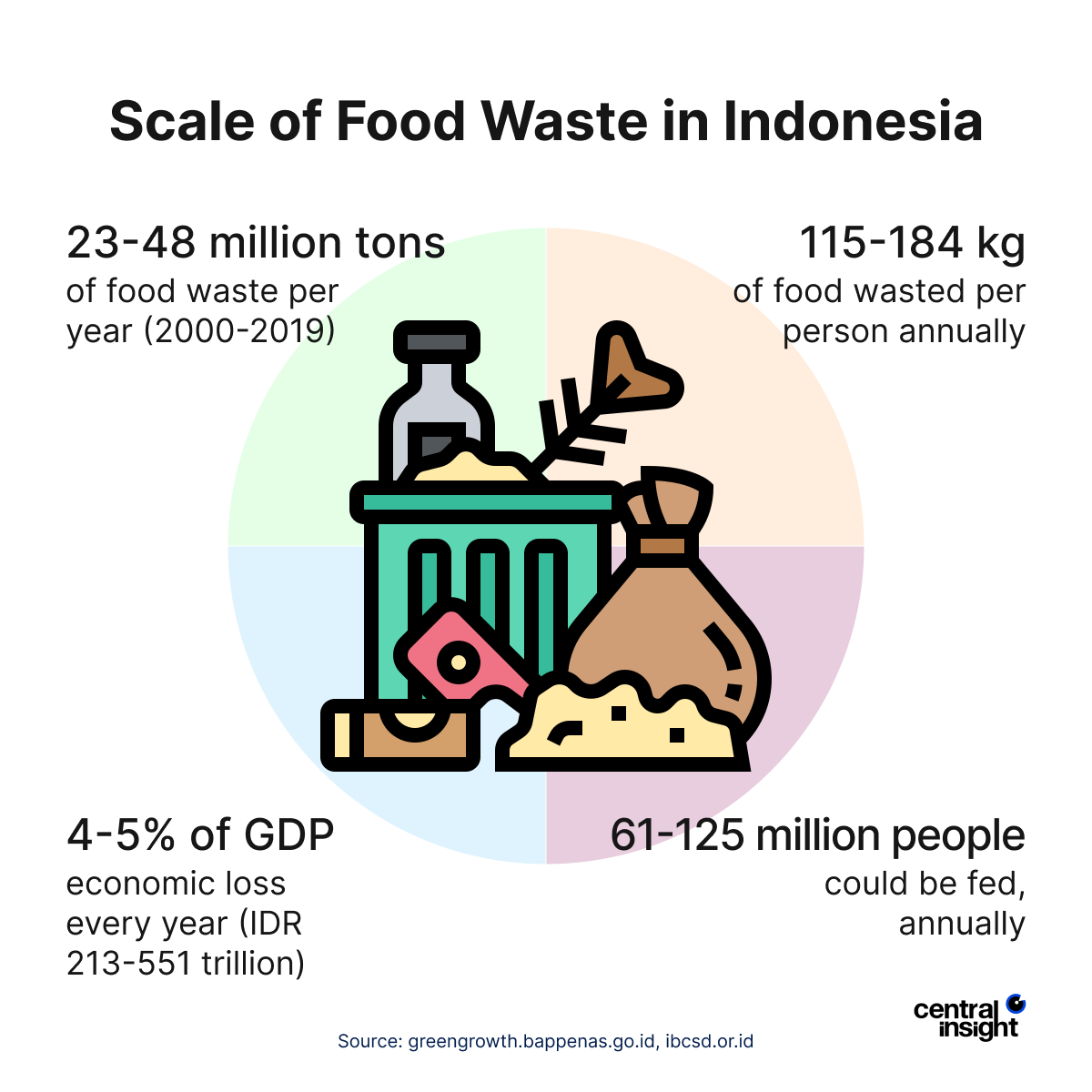Imagine throwing away a portion of your salary every month without realizing it. That’s essentially what Indonesia is doing with food. Each year, the Food Waste in Indonesia is reported to be between 23 to 48 million tons of food, equivalent to 115-184 kg per person.

The Paradox of Food Waste in Indonesia and Economic Loss
When we think about food waste, we often picture leftover meals being tossed in the trash. But in Indonesia, food loss starts much earlier. The biggest victims? Vegetables and grains like rice, corn, and wheat—staples in almost every household.
Shockingly, 62.8% of the total domestic vegetable supply is lost before it even reaches consumers. This means that over half of the fresh produce grown by hardworking farmers never makes it to the dinner table.
This waste doesn’t just impact households—it costs Indonesia between IDR 213-551 trillion annually, making up 4-5% of the nation’s GDP.
But where is all this waste coming from? A significant portion happens in supply chains before food even reaches consumers. Poor storage, inefficient distribution, and unsold products contribute to massive losses. At the same time, food service providers and households also play a big role, often discarding perfectly edible food due to portion sizes, misjudged expiry dates, or simple negligence.
The irony? While Food Waste in Indonesia keeps piling up, millions of Indonesians still struggle with food insecurity. If managed wisely, the wasted food could feed 61 to 125 million people per year. The numbers are staggering, but the solution is within reach. Businesses, policymakers, and individuals must come together to reduce food waste at every stage—because saving food isn’t just about saving money, it’s about creating a more sustainable and equitable future.








